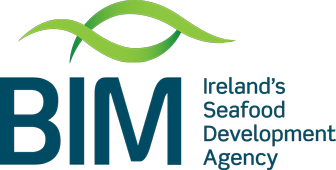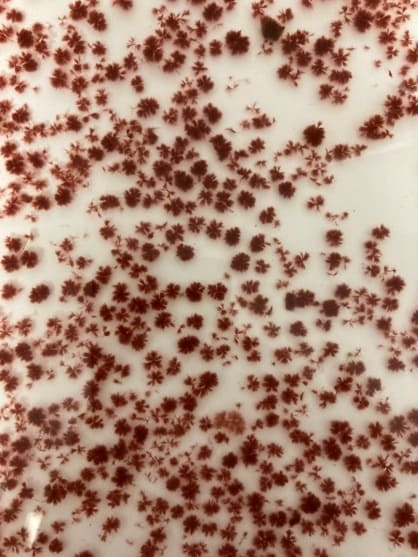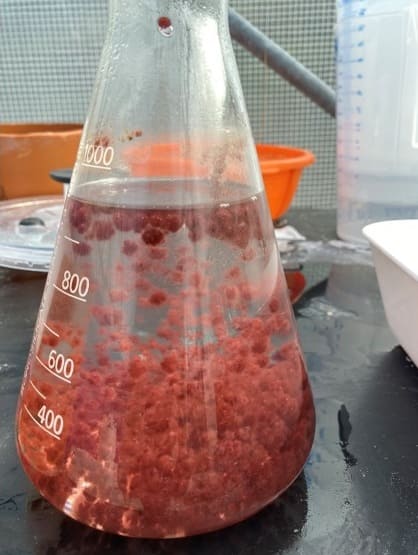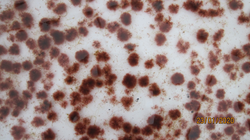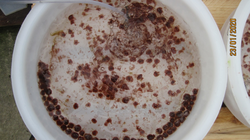The project aims to investigate, extract and test anti-methanogenic compounds from Irish seaweeds on rumen fluid. The project will screen native Irish seaweeds and identify suitable candidates that demonstrating any anti-methanogenic properties. This will be followed by the investigation of potential cultivation techniques of the seaweed species of interest. The project will also look at initial stabilisation and conservation techniques so that the biomass maintains it anti-methanogenic potency. Finally, the project will address the applicability of the resulting seaweed product as a potential feed additive, particularly for ruminants including cattle. The product will be subjected to thorough assessments including, but not limited to, environmental impact, health and safety and techno-economic assessments.
To date, researchers at BMRS have developed a sampling protocol that must be adhered to for all seaweed sampling. A seaweed identification flipbook was also created to help researchers identify the seaweed in the field. Below is the current draft of the protocol that has been tested on four separate occasions. Amendments may be made during this early stage in order to ensure that a useful and well-thought out protocol is applied for the remainder of the project. Four sites in West Cork for collecting samples have been identified. Samples are being analysed for bromoform, total bromine and moisture content by Reading Scientific Services Ltd (RSSL) whom we were put in contact with by Dr Abraham Venter. Samples are kept in the -80C freezer awaiting freeze-drying once RSSL is ready to receive the samples.
Advise and comments from Pete Donlon (BIM), Noel Lee (Connemara Seaweed Company), and Prof. Juliet Brodie (Natural History Museum London; co-author of the “Seaweeds of Britain and Ireland” book)
Update May 2020
Newspaper Articles
Independent.ie
Red seaweed used in animal feed 'could cut methane emissions from cattle here by 60pc'
Afloat.ie
Red Seaweed Cultivation for Animal Feed Could Help Meet Government Climate Targets
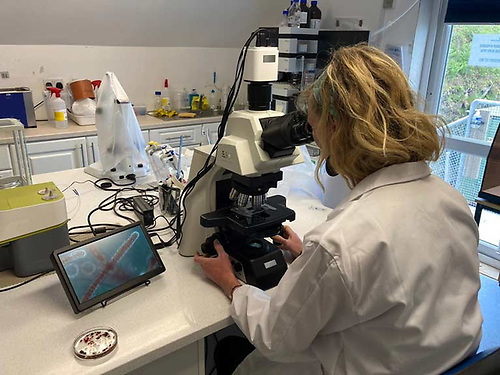 The researcher Dee McElligott checking Asparagopsis armata tetrasporohytes under the microscope.
The researcher Dee McElligott checking Asparagopsis armata tetrasporohytes under the microscope.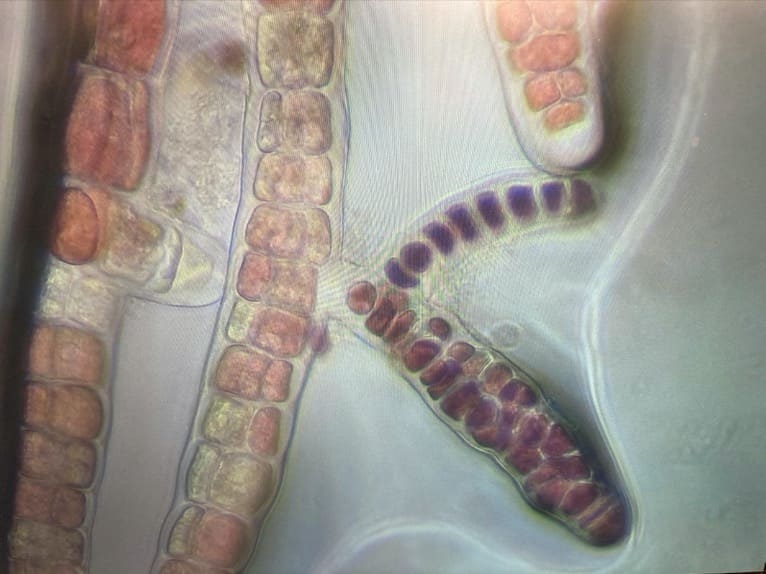 New growth from Asparagopsis armata tetrasporohyte from the cultures
New growth from Asparagopsis armata tetrasporohyte from the cultures
Update April 2020
New growth pom poms from our Asparagopsis armata cultures
Update January 2020
As part of the MERCS research project, we are working hard to try innovative ways of growing new species of seaweed, some of them with considerable success.
Pictures: Asparagopsis armata tetrasporophytes cultures:
